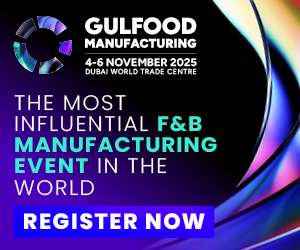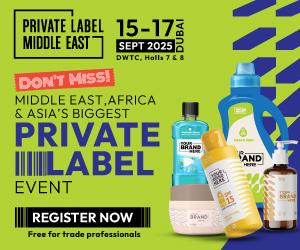

Game-changing trends
There are five trends that I believe are currently reshaping the packaging landscape, influencing consumer choices and driving innovation within the industry. These are:
1- Sustainability: consumers are putting pressure on their preferred brands to shift toward sustainable packaging materials like bioplastics, compostable materials and recyclable options, to reduce environmental impact.
2- Price sensitivity: consumers are cutting back on their expenses due to inflation, leading to brand owners becoming more price efficient and investing in less costly packaging materials, such as mono materials.
3- Smart packaging: the integration of technology into packaging, such as QR codes, radio-frequency identification (RFID) tags and sensors, is transforming traditional packaging into smart, interactive solutions. These technologies enable better traceability, product information and even real-time monitoring of product conditions.
4- Minimalist designs: clean and minimalist packaging designs that prioritize functionality and convenience are becoming more popular. Consumers appreciate packaging that is easy to use, store and dispose of without compromising on protection or aesthetics.
5- Personalization: customized designs, limited edition design, the use of special messages and interactive elements on packaging allow brands to interact with their consumers on a personal basis.
Harnessing the power of AI
Like other business sectors, the packaging industry stands to gain significantly from AI technology. AI integration promises automation, a key driver that enhances productivity, saves time and reduces costs. By leveraging AI capabilities in areas where its precision and efficiency surpass human capabilities, the packaging industry can streamline processes, optimize operations and achieve higher levels of output and cost-efficiency. Harnessing AI in packaging involves integrating the new technology into various aspects of the packaging process, from conceptualization and the packaging design and production to the supply chain, distribution and marketing. AI can support the packaging industry in areas such as: quality control and inspection; maintenance for packaging equipment; supply chain optimization; personalized packaging; and digital packaging.
The plastic dilemma
While acknowledging the prevalent anti-plastic movement, we tend to take a balanced, scientifically driven approach when it comes to the packaging material selection for products. Consumer preference for non-plastic materials has surged, but it’s vital to recognize the advancements in sustainable plastic production, including bioplastics and recyclable variants. Plastic offers protective barriers with the ability to add some gazes, such as modified atmosphere packaging (MAP) and other applications that are crucial for enhancing shelf life and curbing food wastage, a feature relatively absent in other alternatives. Our position is to adopt a holistic approach to combat plastic littering and promote sustainable packaging.

SOHA ATALLAH
LibanPack director and founder/ WPO vice president
LibanPack /WPO
libanpack.org –worldpackaging.org
@atallahsoha
Navigating the regulatory environment
In terms of global exports, success in the F&B industry hinges on being able to skillfully navigate regulatory complexities, particularly compliance with the Food Packaging and Labeling Act (FPLA) and the Food Safety Modernization Act (FSMA).
The FPLA directs the Food and Drug Administration (FDA) to ensure proper labeling of ‘consumer commodities.’ It mandates disclosure of net contents, commodity identity and details of the manufacturer, packer or distributor. Additional regulations cover ingredient descriptions, slack fill-in packages, pricing labels and characterization of package sizes. The FSMA, meanwhile, underscores the industry’s commitment
to consumer safety and establishes rigorous standards for successful exports. Understanding the FSMA is a crucial element for consumer protection, which poses a challenge for many, while strategic food packaging requires a market-savvy approach to captivate consumers. Both are intertwined.
Labeled for success
Creating a standout label for F&B products requires a delicate balance between creativity, brand identity and regulatory compliance. There are several factors that should be referenced on a thorough checklist for creating a strong label. These should include:
∞ Understanding your brand
∞ A thorough compliance check
∞ Ensuring an eye-catching design
∞ Checking typography
∞ Highlighting key information
∞ Including certifications and awards
∞ Using sustainable materials
∞ Testing for readability
∞ Thinking about print quality
∞ Doing mockups and prototypes
∞ A final proofing
It’s also worth bearing in mind that incorporating FPLA and FSMA compliance into food labeling is not only a legal requirement but also a strategic move to ensure consumer safety and regulatory adherence, and support market success.
Major role for white-label factories
White-label factories, complete with certifications such as ISO standards or industry-specific qualifications, provide a guarantee of top-notch quality products. This enhances the reputation of the exporting country and instills confidence in international buyers. The adherence to stringent quality standards contributes to customer satisfaction and positions the exporting nation as a reliable source of goods. This is crucial for accessing international markets.
It’s also important to note that international buyers often prefer working with certified factories, since the compliance process is simpler. Once again, this advantage paves the way for smoother market access, expanded business opportunities and heightened competitiveness on the global stage. The positive impact extends to attracting foreign investment in the export sector. Investors seeking reliable and well-regulated manufacturing facilities are naturally drawn to countries with certified factories.
Certified white-label factories can save up to 29 percent of the cost of the product and also contribute to the development of robust and sustainable supply chains. This, in turn, facilitates smoother trade flows, reduces disruptions and fosters long-term partnerships with global buyers.

SAM A. JAOUDE
CEO of Maden Lebanon LLC
madenlebanon.com
@madenlebanon
Maximizing capacity
Food manufacturers can benefit from increasing their factory output to 100 percent capacity. However, their own brands and local markets may not be able to handle the necessary volume to achieve maximum efficiency. With capital tied up in equipment, the cost per unit produced reduces with each unit put through the plant, which is basic economics that most business owners understand. However, the opportunity to utilize their equipment to process products for other companies under their label, known as private labeling or white labeling of products is often overlooked.
All brand owners are proud of their brand and focus considerable resources on building their company’s brand equity and value, which is a good business strategy. However, if there is unused production capacity, the cost of producing their own brand is high relative to what it could be if the plant were processing at full or at least higher capacity. Packing private labels or white labels puts more products through the factory and lowers the average cost of production, including products that are packed and marketed under the factory owner’s brand.
Creating differentiating factors
Some brand owners may object to this principle, claiming they do not want to use their technology or equipment to build a competitor. This is sound logic if their equipment provides a competitive advantage over what is available from other packers. However, in most cases, a processor can create a differentiating factor between their brand and the product they produce for others. If a differentiating factor cannot be found, there are still opportunities to increase capacity by finding a different market. Selling products where the manufacturer is not responsible for consumer sales, such as direct-to-consumers or chefs, allows for selling the product for less than the brand that needs to be supported with marketing efforts. These could include trade events, website, printed material, social media and others.
Win-wins
The only cost for selling private labels is finding the buyer and working with them to meet their quality and price targets, and the cost of production. Increasing the put-through reduces the overall cost per unit of everything that is processed on that line. If the cost of production is covered, packing with higher efficiency at the plant is a better option than holding out to sell the brand with less efficiency. Revenue from producing extra units (marginal revenue) which exceeds marginal cost (mc) of production contributes to fixed overhead and profits. Therefore, producing that product is good if it doesn’t cannibalize your branded business.

JIM KRIGBAUM
Chief executive officer
20/20 Development Company LLC
2020DC.com


















